Justin Starren
Characterizing Design Patterns of EHR-Driven Phenotype Extraction Algorithms
Nov 15, 2018
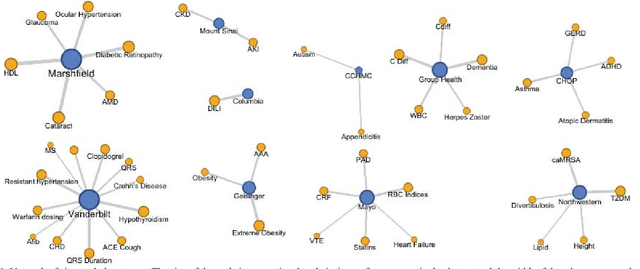
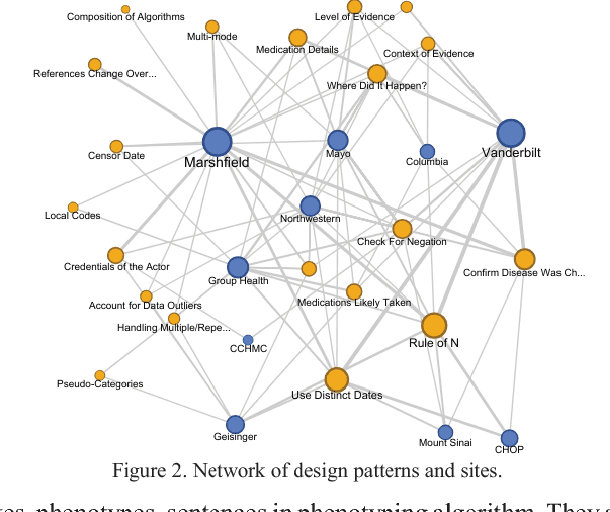

Abstract:The automatic development of phenotype algorithms from Electronic Health Record data with machine learning (ML) techniques is of great interest given the current practice is very time-consuming and resource intensive. The extraction of design patterns from phenotype algorithms is essential to understand their rationale and standard, with great potential to automate the development process. In this pilot study, we perform network visualization on the design patterns and their associations with phenotypes and sites. We classify design patterns using the fragments from previously annotated phenotype algorithms as the ground truth. The classification performance is used as a proxy for coherence at the attribution level. The bag-of-words representation with knowledge-based features generated a good performance in the classification task (0.79 macro-f1 scores). Good classification accuracy with simple features demonstrated the attribution coherence and the feasibility of automatic identification of design patterns. Our results point to both the feasibility and challenges of automatic identification of phenotyping design patterns, which would power the automatic development of phenotype algorithms.
Predictive Analytics Using Smartphone Sensors for Depressive Episodes
Mar 24, 2016
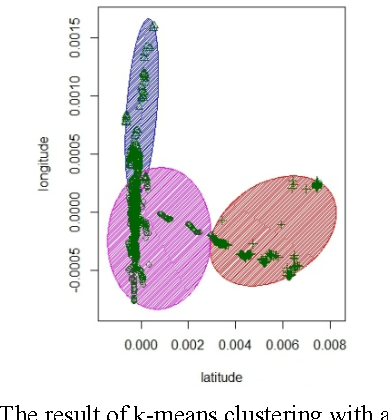
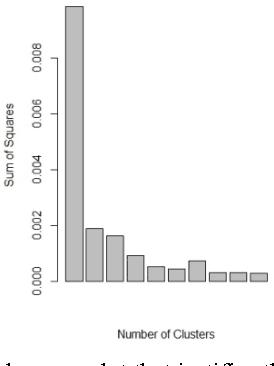
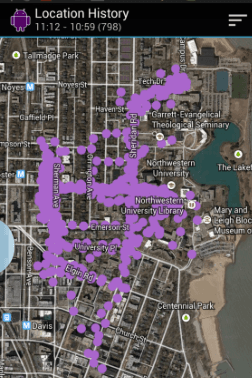
Abstract:The behaviors of patients with depression are usually difficult to predict because the patients demonstrate the symptoms of a depressive episode without a warning at unexpected times. The goal of this research is to build algorithms that detect signals of such unusual moments so that doctors can be proactive in approaching already diagnosed patients before they fall in depression. Each patient is equipped with a smartphone with the capability to track its sensors. We first find the home location of a patient, which is then augmented with other sensor data to identify sleep patterns and select communication patterns. The algorithms require two to three weeks of training data to build standard patterns, which are considered normal behaviors; and then, the methods identify any anomalies in day-to-day data readings of sensors. Four smartphone sensors, including the accelerometer, the gyroscope, the location probe and the communication log probe are used for anomaly detection in sleeping and communication patterns.
 Add to Chrome
Add to Chrome Add to Firefox
Add to Firefox Add to Edge
Add to Edge